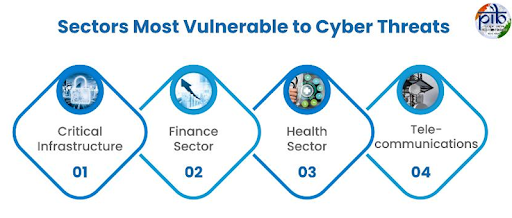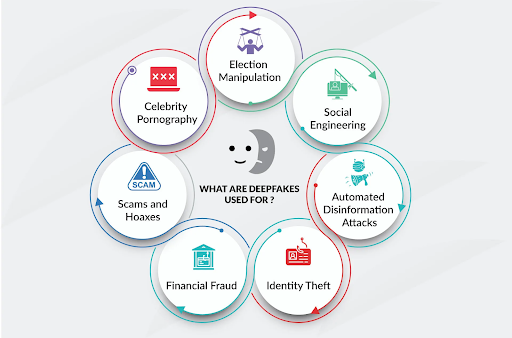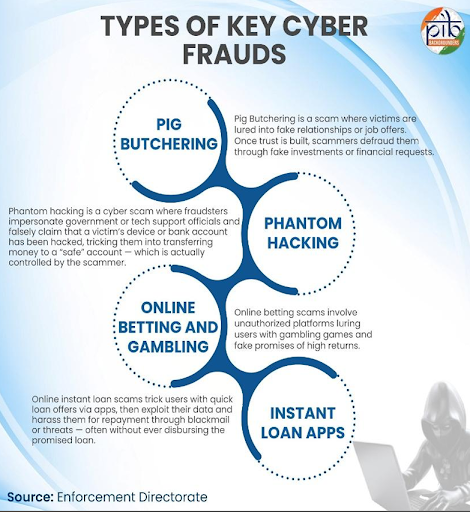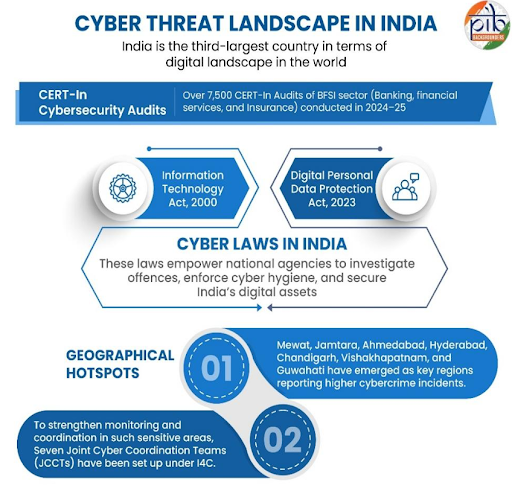



India's government is building robust defense systems, combining legislation and institutional support to combat evolving cyber threats. Citizens must practice good cyber hygiene and remain cautious of unsolicited communications to collectively secure a Digital India.

Copyright infringement not intended
Picture Courtesy: PIB
India has established a strong multi-layered framework, utilizing technology, laws, and public awareness initiatives, to address the increase in cyber fraud driven by growing digital connectivity.
|
Read all about: ₹1000 Crore Lost Monthly to Cross-Border Cyber Frauds l APK Scam and Cyber Fraud Explained |
India’s rapid digitalisation under the Digital India Mission has reshaped governance, economy, and public service delivery. With 86% of households connected to the internet, digital transactions, e-governance platforms, and online services have become part of everyday life.
However, this digital boom has also expanded the attack surface for cybercriminals. Fraudsters exploit human error, weak infrastructure, and technological loopholes to commit crimes like identity theft, phishing, and digital financial scams.
Between 2022 and 2024, the National Cyber Crime Reporting Portal (NCRP) reported cybersecurity incidents increased from 10.29 lakh to 22.68 lakh, with cyber frauds amounting to ₹36.45 lakh, showing increase in cyber threats and improved reporting due to awareness and monitoring systems like CERT-In and the National Cyber Crime Reporting Portal (NCRP).
Thus, India’s digital progress and cyber vulnerability are two sides of the same coin — demanding a holistic cyber governance framework that balances innovation with security.
Spoofing, Phishing, and Deepfakes: Criminals use techniques like spoofing (impersonating trusted entities), phishing (using deceptive emails or messages to steal sensitive information), and AI-driven deepfakes to manipulate and deceive victims.

UPI Frauds: Unified Payments Interface (UPI) has been targeted by fraudsters using compromised mobile numbers to execute unauthorized transactions.
Organized Scams: Many cyber frauds are not isolated incidents but are directed by organized crime syndicates, sometimes operating from "fraud factories" in other countries. Common scams include:

Information Technology Act, 2000
Foundational law for cyber legal systems. It criminalizes offenses like identity theft, impersonation, and the dissemination of obscene material, empowering authorities to prosecute fraudsters and block malicious websites.
IT (Intermediary Guidelines and Digital Media Ethics Code) Rules, 2021
Hold social media platforms and other digital intermediaries accountable, mandating the removal of unlawful content and addressing the misuse of emerging technologies like AI.
Digital Personal Data Protection Act, 2023
Establishes a framework for the lawful and transparent handling of personal data. It places strict obligations on organizations (data fiduciaries) to implement security safeguards, thereby minimizing risks of unauthorized data access and misuse.

Indian Computer Emergency Response Team (CERT-In)
As the national nodal agency, CERT-In is responsible for responding to cybersecurity incidents. It monitors threats, issues advisories, and conducts mock drills to enhance the cyber resilience of government and private sector organizations.
National Critical Information Infrastructure Protection Centre (NCIIPC)
Focuses on protecting critical infrastructure sectors like banking, telecom, and energy. It conducts risk assessments and provides guidelines to strengthen defenses against attacks that could cripple essential services.
Indian Cybercrime Coordination Centre (I4C)
Established under the Ministry of Home Affairs, I4C provides a framework for law enforcement agencies to tackle cybercrime in a coordinated manner. It facilitates information sharing, provides training, and develops tools to help track and prosecute cybercriminals.
Financial Fraud Mitigation
The Citizen Financial Cyber Fraud Reporting and Management System (CFCFRMS) and the dedicated national helpline 1930 provide immediate assistance to victims of financial fraud, facilitating prompt reporting and freezing of fraudulent transactions.
Centralized Reporting
National Cyber Crime Reporting Portal allows citizens to report all types of cybercrime, with a special focus on offenses against women and children.
Capacity Building and Awareness
Public Outreach
The government actively uses social media (through the ‘Cyber Dost’ handle), radio, and other platforms to spread awareness about common scams and promote safe online practices.
Deepening Public-Private Partnerships (PPP)
Government should promote deeper collaboration with private cybersecurity firms, FinTech companies, and telecom operators, for better threat intelligence sharing and the co-development of advanced security solutions.
Investing in Future Technologies
To combat AI-driven threats like deepfakes and advanced malware, India must invest in research and development of AI-based defensive tools for threat detection, predictive analysis, and digital forensics.
Enhancing Digital Literacy at the Grassroots
While awareness campaigns are useful, a structured, nationwide digital literacy program is essential. This should be integrated into school curricula and community-led programs, with a special focus on vulnerable groups like the elderly and citizens in rural areas.
Strengthening International Cooperation
Since many cyber frauds are transnational, India must strengthen diplomatic ties and legal frameworks (like Mutual Legal Assistance Treaties) with other countries to facilitate quicker investigation, evidence sharing, and extradition of criminals.
Building a Skilled Cybersecurity Workforce
There is a critical need to bridge the cybersecurity skills gap. This can be achieved by promoting cybersecurity courses in universities, offering vocational training, and upskilling existing IT professionals.
Securing India's digital future requires a collaborative effort. While the government creates a robust defense system, citizens must practice cyber hygiene. This joint vigilance helps combat cyber fraud and unlocks the full potential of a secure Digital India.
Source: PIB
|
PRACTICE QUESTION Q. India's rapid digital expansion has increased both opportunities and vulnerabilities.Critically analyze. 150 words |
Also known as the Botnet Cleaning and Malware Analysis Centre, the Cyber Swachhta Kendra (CSK) is a citizen-centric service run by CERT-In. It helps detect and remove malicious programs from user systems and provides free tools and information to secure their devices.
The National Cyber Security Strategy, under the National Security Council Secretariat (NSCS), is a policy document aimed at ensuring secure and resilient cyberspace for citizens and critical infrastructure. It outlines comprehensive measures for preparedness against advanced cyber threats.
The I4C is an initiative by the Ministry of Home Affairs to combat cybercrime. It coordinates efforts between law enforcement agencies, financial intermediaries, and other stakeholders. Its systems, such as the Citizen Financial Cyber Fraud Reporting and Management System (CFCFRMS), enable rapid action against financial cyber fraud.





© 2025 iasgyan. All right reserved